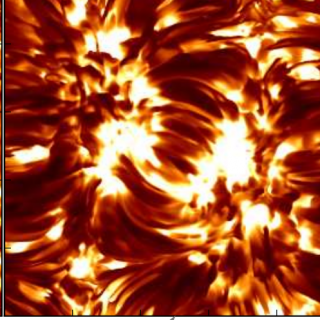Bibcode
Kuckein, C.; González Manrique, S. J.; Kleint, L.; Asensio Ramos, A.
Referencia bibliográfica
Astronomy and Astrophysics
Fecha de publicación:
8
2020
Revista
Número de citas
17
Número de citas referidas
15
Descripción
Aims: We investigate the dynamics and magnetic properties of the plasma, including the line-of-sight velocity (LOS) and optical depth, as well as the vertical and horizontal magnetic fields, belonging to an erupted solar filament.
Methods: The filament eruption was observed with the GREGOR Infrared Spectrograph at the 1.5-meter GREGOR telescope on July 3, 2016. We acquired three consecutive full-Stokes slit-spectropolarimetric scans in the He I 10830 Å spectral range. The Stokes I profiles were classified using the machine learning k-means algorithm and then inverted with different initial conditions using the HAZEL code.
Results: The erupting-filament material presents the following physical conditions: (1) ubiquitous upward motions with peak LOS velocities of ∼73 km s-1; (2) predominant large horizontal components of the magnetic field, on average, in the range of 173-254 G, whereas the vertical components of the fields are much lower, on average between 39 and 58 G; (3) optical depths in the range of 0.7-1.1. The average azimuth orientation of the field lines between two consecutive raster scans (<2.5 min) remained constant.
Conclusions: The analyzed filament eruption belongs to the fast rising phase, with total velocities of about 124 km s-1. The orientation of the magnetic field lines does not change from one raster scan to the other, indicating that the untwisting phase has not yet started. The untwisting appears to start about 15 min after the beginning of the filament eruption.
Movies attached to Figs. 1 and 3 are available at http://https://www.aanda.org
Proyectos relacionados

Magnestismo Solar y Estelar
Los campos magnéticos son uno de los ingredientes fundamentales en la formación de estrellas y su evolución. En el nacimiento de una estrella, los campos magnéticos llegan a frenar su rotación durante el colapso de la nube molecular, y en el fin de la vida de una estrella, el magnetismo puede ser clave en la forma en la que se pierden las capas
Tobías
Felipe García

Magnetismo, Polarización y Transferencia Radiativa en Astrofísica
Los campos magnéticos están presentes en todos los plasmas astrofísicos y controlan la mayor parte de la variabilidad que se observa en el Universo a escalas temporales intermedias. Se encuentran en estrellas, a lo largo de todo el diagrama de Hertzsprung-Russell, en galaxias, e incluso quizás en el medio intergaláctico. La polarización de la luz
Ernest
Alsina Ballester